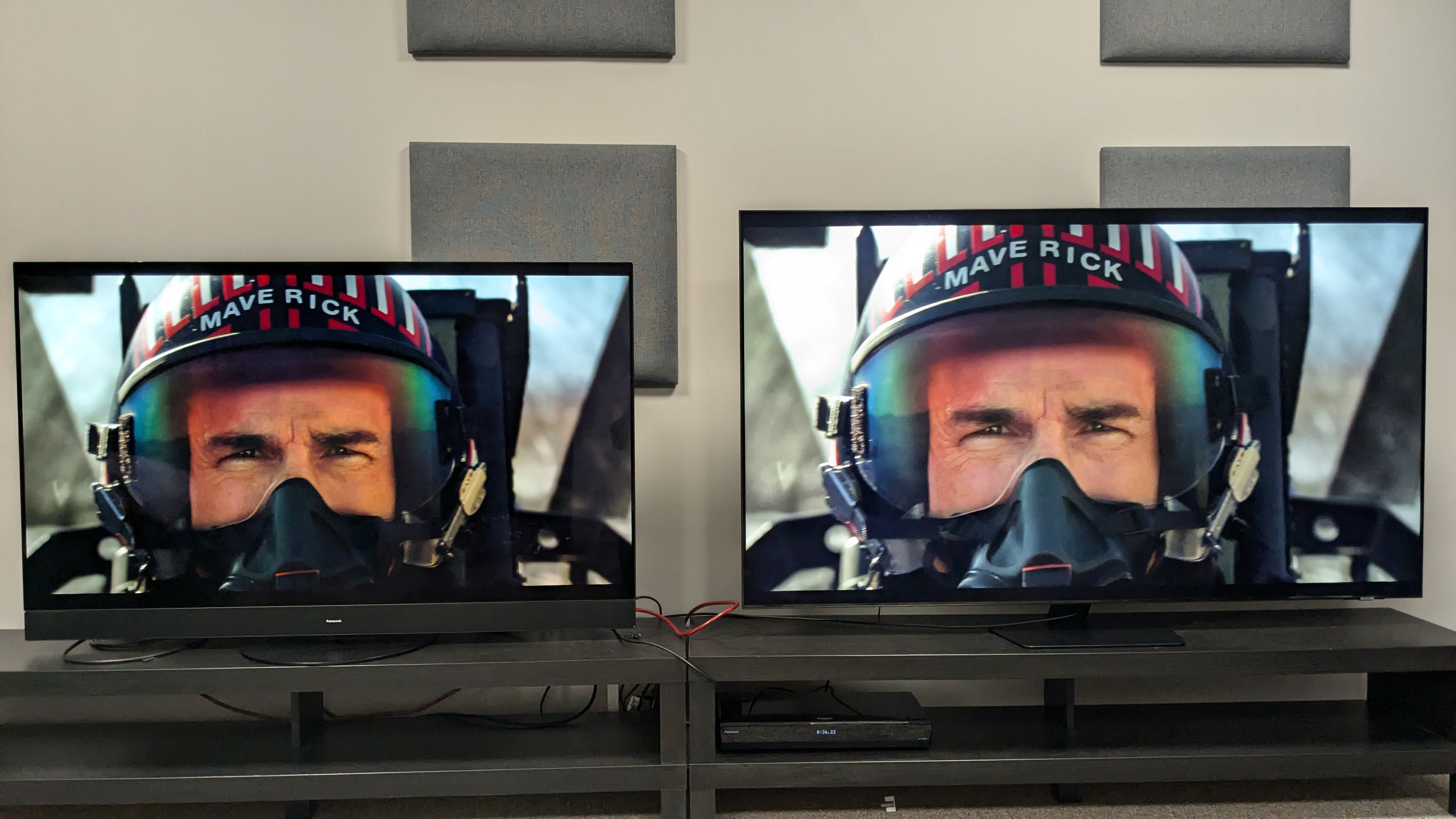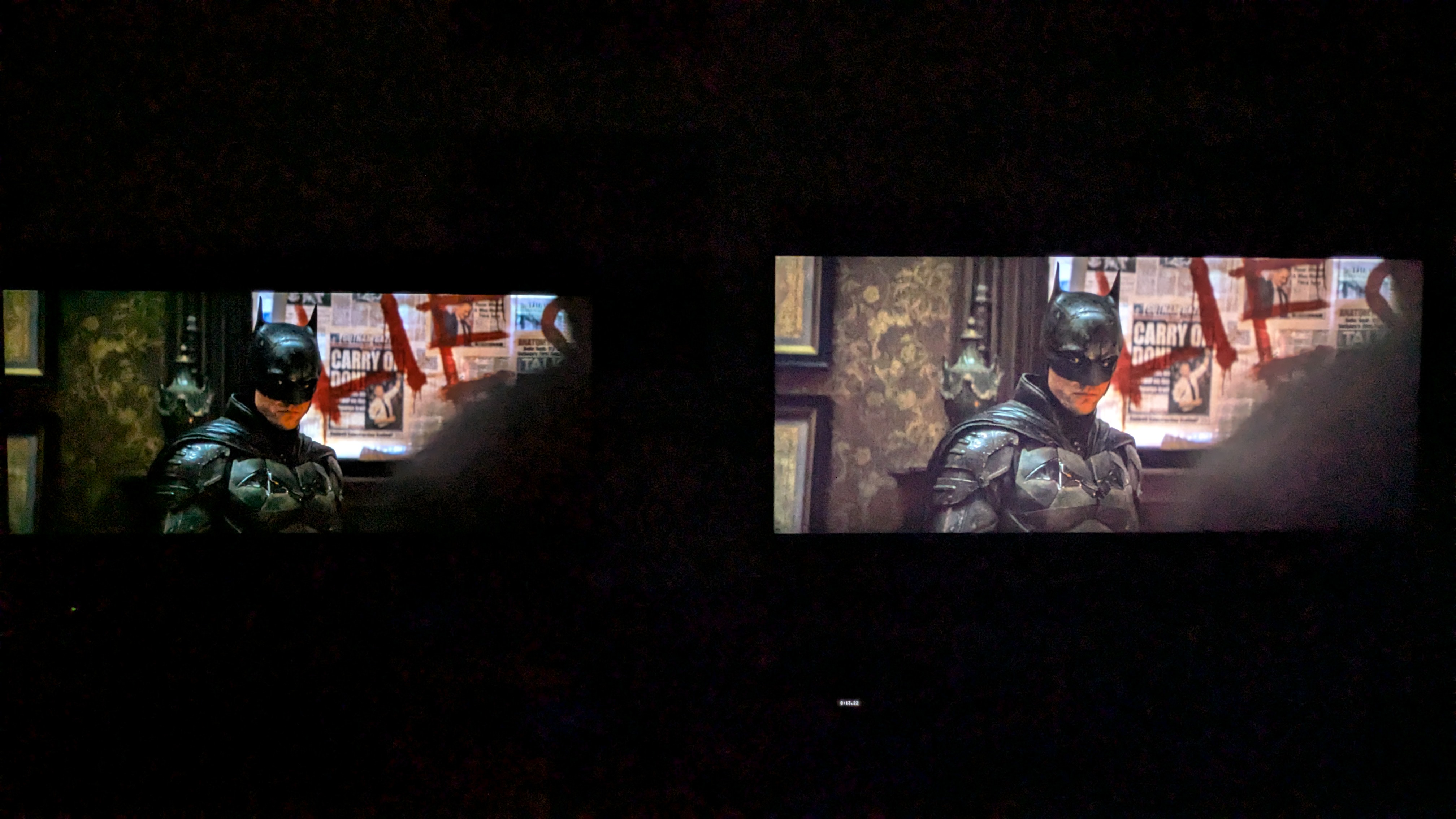Choosing between a mini-LED and an OLED TV used to be simple – if you chose mini-LED, you clearly wanted brightness and if you chose OLED, you clearly wanted deeper black levels. However, over time the conversation has changed, with both TV technologies now trying to cover all the bases.
OLED and mini-LED tech commonly feature among the best TVs and both have evolved dramatically over the years. We’re now seeing the best OLED TVs hit around 2,000 nits peak brightness whereas several years ago, the thought of an OLED TV achieving over 1,000 nits was unimaginable. Even mid-range OLEDs such as the LG C4 are now passing the 1,000 nits threshold.
The brightness improvements are due to the introduction of different technologies such as micro lens array (MLA) and QD-OLED, the latter an OLED panel enhanced with a quantum dot layer.
Mini-LED has also seen vast improvements, with TVs from companies such as TCL and Hisense adding more local dimming zones for improved contrast and black levels while also delivering extraordinary brightness – up to a whopping 6,500 nits in some instances. Even affordable models are now capable of extreme brightness, with the the TCL QM851G and TCL C855 hitting 3,583 nits and 2,920 nits peak brightness respectively when we tested them.
One of the best mini-LED TVs of 2024 is the Sony Bravia 9. This set takes mini-LED to a completely new level, with its new XR Backlight Master Drive with High Peak Luminance tech delivering such high levels of contrast and black detail that it should worry OLED TVs.
To test out just how close the performance of OLED and mini-LED TVs has come, I evaluated Samsung’s QN90D flagship mini-LED side by side with a mid-range OLED, the Panasonic MZ1500. For my tests, both TVs were set to their Filmmaker Mode picture preset.
Excelling in the right areas
Table of Contents
I started my viewing with The Batman, a dark movie (it’s mastered at 400 nits instead of the usual 1,000 nits) that I use as a test for contrast and black levels. During the opening crime scene investigation, the Panasonic OLED clearly demonstrated deeper black levels and better shadow detail than the Samsung mini-LED. However, I was surprised to find that the Samsung also had suitably deep black levels and excellent contrast, maintaining a balance between light sources such as lamps and the gloomy, dim surroundings. Interestingly enough, the Samsung was also less susceptible to black crush, maintaining the detail in Batman’s suit and Jim Gordon’s clothing in darker scenes.
I viewed this scene in both bright lighting and pitch-black conditions in our test room. Due to its higher full-screen brightness and anti-reflection screen, the Samsung fared better in the brightly lit conditions. But in dark conditions, the Panasonic came out on top as the Samsung suffered from mini-LED’s kryptonite: backlight blooming. This showed up as halo effects around brighter objects (although it wasn’t as bad as on some budget mini-LED models) and was much more apparent in darker conditions.
I next viewed a brighter movie, La La Land, which features many bold colors throughout. During the opening number (Another Day of Sun), all the dancers wear vivid, colorful clothing and the Panasonic and Samsung displayed these differently. The Panasonic’s colors appeared deeper and more accurate. The Samsung’s colors appeared brighter and more vibrant, however, which better suited the tone of the movie. During the nighttime sequences, which heavily favor a blue, pink and purple color palette, the Panasonic again showed more color depth, but the Samsung had a brighter, more dynamic look.
None of these results particularly surprised me, although the Samsung put up stiffer competition than expected, especially when it came to contrast. But, there were some areas where things got a little more interesting.

The fight is on
The Samsung QN90D’s predecessor, the Samsung QN90C, featured among our best TVs for sport thanks to its high full-screen brightness and excellent motion handling. The QN90D follows in its footsteps, demonstrating superb motion handling even without the aid of any motion settings adjustments. OLED TVs usually have excellent motion handling, but in this case even the Panasonic couldn’t beat the Samsung.
Sound was another area where I found surprising differences between the two sets. Panasonic TVs are often among the best TVs for sound, with the Panasonic MZ2000 OLED featuring an external speaker at the bottom of the screen for more direct and powerful built-in audio. The MZ1500 I used for my comparison test features a similar speaker, so you’d naturally assume it would have superior sound, but this wasn’t entirely the case.
I tested the Panasonic and Samsung’s built-in audio using the Batmobile chase from The Batman. Although the Panasonic had the meatier, puncher sound thanks to its front-facing speaker, I actually found myself more drawn to the Samsung’s sound, which is enhanced by an Object Tracking Sound (OTS) feature. With this, every crash, screeching tyre, explosion and rumbling engine noise was accurately placed around the screen, giving a greater sense of immersion and connection between picture and sound, and the Samsung’s bass carried plenty of heft as well.

Final thoughts
Although these TVs did to an extent perform in the way I anticipated – the Panasonic OLED showing better black levels and contrast and the Samsung mini-LED brighter, and more vibrant images – it was the subtleties and small things that surprised me. The Samsung was no slouch when it came to contrast and black levels. But the real surprise came with sound, with the Samsung more than holding its own against the Panasonic.
While overall the Panasonic OLED had the stronger picture in my test, the Samsung mini-LED did make me question whether I was more of a fan of it over the Panasonic. A couple of years ago, there would have been no doubt in my mind that I preferred OLED, which goes to show how far mini-LED tech has come.

























